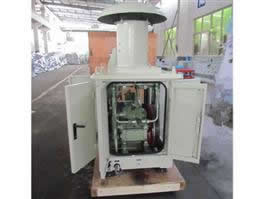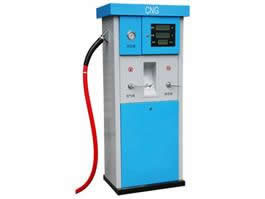1. What should be taken into account when developing solar power generation solutions?
Solar power generation system is composed of solar battery pack, solar controller and storage battery. Inverter is sometimes needed when the output power is AC 220V or 110V.
The working performance automatically commanded by solar controller and prevent accumulator from breakdown caused by overloading or discharged. It converts solar radiant energy into electric energy which is either stored in storage battery.
The role of solar controller is to take control of the whole system’s working state. Besides, it can protect storage battery from damage caused by over charge or over discharge. Qualified controller also has a function of temperature compensation at places where temperature difference is quite larger. Solar controller has other additional functions, such as light-operated and time-operated switch.
accumulator is lead-acid battery. In small micro system, NI-MH battery, nickel-cadmium battery or lithium battery can be adopted as well.
accumulator stores electric energy sent from solar panel and releases it if needed.
DC to AC utilizes inverter can be adapted to different users.
Factors should be considered when designing solar power generation system:
1. Where is the solar power generation system used? How is the solar radiation of that area?
2. How much is the load power of the system?
3. How many voltages does the system output? Are they dc voltages or ac voltages?
4. How long does the system work every day?
5. How many days can the system supply power when it is overcast and rainy?
6. What kind of load is needed, pure resistive load, or capacitive load, or inductive load? How large is the starting current?
7. How many batteries does solar generation system need?
2.Considerable issues in designing solar power system.
During the construction, instruments needed include solar panel, inverter, all kinds of debugging instrument, soldering iron, and so on.
3. What should be paid attention to when choosing tools or accessories?
The installation and debugging of all electric instruments depend on intrinsic safety type to prevent them from fire and explosion.
4. What advantages do our solutions have?
1) Power Supply for Solar Energy Users
a. Small power supply (ranging from 10 to 1000 W) can provide electricity for illumination, television and radio in remote areas without electricity.
b. The power supply can also be used in 3 to 5 Kw rooftop grid-tied power generation system.
c. It can provide power to photovoltaic pump so that it can draw water from deep well for drinking and irrigation in areas without electricity.
2) Transportation Area
Solar power generation system can provide electricity to beacon light, signal light, traffic warning/marker light, street lamp, high altitude obstacle light, wireless telephone booth, unattended station, etc.
3) Communication
Solar power generation system is suitable for unattended microwave relay station, optical cable maintenance station and radio/communication/paging power system, rural carrier telephony photovoltaic system, small communication, etc.
4) Oil, Ocean and Weather
Solar power generation can be used in the fields of oil, ocean and weather.
5) Power Supply for Household Lamps and Lanterns
This power generation system supplies power to yard lamp, energy saving lamp, portable lamp, etc.
6) Photovoltaic Power Station
Solar power generation system is fit for 10 Kw to 50 Mw photovoltaic power station, wind-solar hybrid power station, etc.
7) Solar Building
Solar power generation can be combined with construction materials. This helps huge buildings to achieve independence from power supply station, because they can supply electricity for themselves in the future.
8) Other Areas
a. Solar auto, battery charging equipment, vehicle air conditioner, ventilator, etc.
b. Renewable power generation system for solar hydrogen fuel battery.
c. Power supply for sea water desalting equipment.
d. Satellite, spacecraft, space solar station, and so on.
5. Main designing process and parameter calculation
Make sure that lamps and lanterns have no lighting dead angle. Customization can be offered according to different utilization requirements, like the increase of power and power supply for continuous rainy days. At present, the electric power is 1 Kw which can meet 24-hour continuous power supply in sunny days. Daily generating capacity is 24 KWH, satisfying 2 Kw electricity utilization power.
1) Capacity design of storage battery pack
The capacity of storage battery is necessary to ensure continuous power supplying. Daily electricity output of solar square is stored in storage battery for equipment use.
Thus, the calculation formula of battery capacity (BC) is:
BC=A × QL × TO/CC Ah
In this formula, A refers to safety coefficient which is between 1.1 and 1.4.
OL is the average daily power consumption. It can be got through multiplying working current by working hours.
TO means the temperature correction coefficient. Generally, above 0℃is 1; -10℃ to 0℃ is 1.1; below -10℃ is 1.2.
CC refers to battery discharge depth. Common lead-acid storage battery is 0.7.
Choose 2v/250Ah × 55 storage battery pack.
2) The design of solar battery square
a. Solar battery square uses 24V, 180Wp solar panel.
b. Numbers of solar panels
Suppose D as daily output of single solar panel, P as power, C as charging time, E as comprehensive discharging efficiency, and L as loss. Thus formula is:
D=P × C × E × L
Suppose C as daily power consumption, I as inverter efficiency, DCC as dc load power consumption and ACC as ac load power consumption. Then the formula is:
C=DCC + ACC/I
Suppose N as numbers of solar battery panels and M as margin. We can get the following formula:
N=C/D × O
c. Power of solar battery module
The module uses 36 pieces of 12V/180W battery panels. Every nine pieces are concatenated in series. Then there are four series connections and make them in parallel connection. The module employs monocrystalline silicon solar panels which feature high generating efficiency and long service life. Suede low iron tempered glass is adopted to reduce the panel’s reflection against sunlight, leading to maximum generation capacity.

